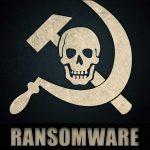WHOLE Ransomware is a malicious software infection that falls under the ransomware category. Like other ransomware strains, it encrypts all data on a victim’s computer, such as photos, documents, audio files, and videos, appending a specific “.whole” extension to every file. This renders the files inaccessible and leaves a ransom note named README-ID-[victim’s_ID].txt in affected directories. In this article, we will explore what WHOLE Ransomware is, the associated dangers, its methods of spreading, and provide a step-by-step guide on how to remove it and protect your system from future infiltrations.
What is WHOLE Ransomware?
WHOLE Ransomware encrypts files by adding its “.whole” extension to their names. For example, “photo.jpg” becomes “photo.jpg.whole,” and “table.xlsx” becomes “table.xlsx.whole.” In each directory containing the encrypted files, a ransom note, README-ID-[victim’s_ID].txt, can be found. This note serves as a demand for a ransom, providing instructions on how to contact the ransomware operators and likely includes information on purchasing a decryption tool from them.
The README-ID-[victim\’s_ID].txt document (in the case of the example – README-ID-KLAAQENQB3174C1.txt) provided by the Whole ransomware contains the following note:
YOUR FILES ARE ENCRYPTED
Your files have been encrypted with strong encryption algorithms and modified!
Don\’t worry your unique encryption key is stored securely on our server and your data can be decrypted quickly and securely.
We can prove that we can decrypt all of your data. Please just send us 3 not important, small(~2mb) encrypted files, which are randomly stored on your server. Also attach your this file README-ID-.txt left by us in every folder.
We will decrypt these files and send them to you as a proof. Please note that files for free test decryption should not contain valuable information.
If you will not start a dialogue with us in 72 hours we will be forced to publish your files in the public domain. Your customers and partners will be informed about the data leak.
This way, your reputation will be ruined. If you will not react, we will be forced to sell the most important information such as databases and personal data to interested parties to generate some profit.
If you want to resolve this situation, attach in letter this file README-ID-.txt and write to ALL of these 2 email addresses:
* pmmx@techmail.info
* wholekey@mailfence.com
–
IMPORTANT!
* We recommend you contact us directly to avoid overpaying agents.
* We asking to send your message to ALL of our 2 email adresses because for various reasons, your email may not be delivered.
* Our message may be recognized as spam, so be sure to check the spam folder.
* If we do not respond to you within 24 hours, write to us from another email address.
* Please don\’t waste the time, it will result only additinal damage to your company.
* Please do not rename and try to decrypt the files yourself. We will not be able to help you if files will be modified.
* If you will try to use any third party software for restoring your data or antivirus solutions, please make a backup for all encrypted files.
* If you delete any encrypted files from the current computer, you may not be able to decrypt them.
The Dangers of WHOLE Ransomware
WHOLE Ransomware poses several significant dangers:
- File Encryption: WHOLE encrypts all your valuable files, making them inaccessible. This can lead to data loss and disrupt your work or personal life.
- Ransom Demands: The ransom note typically demands payment in exchange for a decryption tool. Paying the ransom is risky, as there’s no guarantee of receiving a functional decryption key, and it incentivizes cybercriminals to continue their activities.
- Data Exposure: If victims do not pay the ransom, the threat actors may threaten to publish the encrypted data in the public domain, potentially causing data leaks and reputational damage.
How WHOLE Ransomware Spreads
Ransomware, including WHOLE, can infiltrate systems through various methods:
- Email Spam: Cybercriminals often use phishing emails that appear to be from legitimate sources, enticing victims to open malicious attachments or click on links that download the ransomware.
- Trojan Injection: Some ransomware is delivered as Trojans, disguised as legitimate software updates or downloads. When installed, they reveal themselves as ransomware and encrypt files.
- Peer-to-Peer File Transfer: Using peer-to-peer file-sharing networks like BitTorrent or eMule for downloading files can be risky, as the origin and content of downloaded files are often uncertain.
Removing WHOLE Ransomware
To remove WHOLE Ransomware from your system, follow these steps:
- Backup Encrypted Files: Before attempting removal, create a backup of all encrypted files. This ensures you have copies in case the decryption process is unsuccessful.
- Download Reputable Anti-Malware Software: Obtain a reliable anti-malware tool for your system. Ensure it is from a trusted source, and do not use any tools mentioned in third-party websites.
- Install and Run Anti-Malware Software: Install the anti-malware software and perform a full system scan. Let the software identify and quarantine any malicious files associated with WHOLE Ransomware.
- Remove the Threat: Follow the instructions provided by the anti-malware software to remove the ransomware completely from your system.
- Restore Files: If you have backups of your files, use them to restore your data. Do not rely on paying the ransom, as it does not guarantee file recovery.
Protecting Your System
To safeguard your system against future infiltrations and ransomware attacks, consider the following precautions:
- Email Safety: Exercise caution when opening email attachments or clicking on links, especially if the sender is unfamiliar. Avoid downloading attachments from suspicious or unsolicited emails.
- Software Sources: Download software and updates only from official, trusted sources. Avoid downloading from unverified websites or third-party sources.
- Peer-to-Peer Networks: Be cautious when using peer-to-peer file-sharing networks. Scan downloaded files with antivirus software before opening them.
- Regular Backups: Maintain regular backups of your important data. Ensure these backups are stored in a secure location and are up to date.
- Security Software: Keep your security software, including antivirus and anti-malware tools, updated to detect and prevent threats.
- System Updates: Regularly update your operating system and software to patch known vulnerabilities.
By following these steps and practicing proactive security measures, you can reduce the risks associated with WHOLE Ransomware and enhance your system’s security. Prevention is key to safeguarding your data and avoiding ransomware attacks.
Conclusion
In conclusion, WHOLE Ransomware is a perilous malware strain that can have devastating consequences for both individuals and organizations. It encrypts files, rendering them inaccessible and demanding a ransom for their release. However, succumbing to the ransom demands is discouraged, as it not only fuels the criminal activities but also provides no guarantee of data recovery. The best defense against WHOLE Ransomware and similar threats is a combination of vigilance, preventive measures, and timely removal.
To protect your system effectively, it’s essential to remain cautious while handling emails, especially those from unknown senders, and avoid downloading attachments or clicking on links that may lead to ransomware infiltration. Stick to trusted software sources and ensure that all your software and operating systems are up to date, as this minimizes the risk of known vulnerabilities being exploited.
Regularly backing up your data and employing robust security software is crucial for early threat detection and prevention. Additionally, should your system fall victim to WHOLE Ransomware, a swift response involving the use of reputable anti-malware tools can help mitigate the damage. By staying informed and proactive, you can safeguard your data, privacy, and overall system security in an ever-evolving digital landscape.





